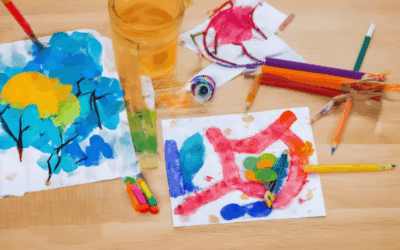Discover the transformative power of upcycled home accessories and how they are revolutionizing modern interiors. In today’s eco-conscious world, repurposing and transforming discarded materials into functional and stylish home accents has become more than just a trend—it’s a movement. From refabricating vintage furniture to crafting decorative pieces from unexpected materials, upcycled home accessories offer a unique blend of creativity and sustainability. Whether you’re a seasoned DIY enthusiast or new to the craft, this article delves into the popular items, benefits, challenges, and future of upcycled home decor. Explore how upcycled items are not only eco-friendly but also highly sought after, making them a must-have addition to any home. Get ready to uncover the secrets behind the rise of upcycled home accessories and how they are shaping the way we think about recycling and repurposing.

Most Popular Upcycled Items
Upcycling has become a popular trend, allowing individuals to transform discarded items into valuable creations. Here are some of the most commonly upcycled items:
- Furniture: Old wooden crates, pallets, and discarded chairs are frequently repurposed into stylish furniture pieces like shelves, tables, and benches.
- Metal Items: Scrap metal, old bicycle frames, and industrial parts can be transformed into decorative wall art, sculptures, and functional tools.
- Clothing: Tattered clothing, denim jeans, and old linens are often repurposed into trendy accessories, bags, and home decor items.
- Household Goods: Cardboard boxes, tin cans, and glass bottles are popular choices for creating organizers, planters, and decorative items.
- Paper Products: Paper towel rolls, toilet paper tubes, and newspaper rolls can be turned into creative projects like dolls, bird feeders, and mobiles.
- Plastic Items: Plastic bottles, yogurt containers, and foam packaging can be repurposed into garden ornaments, storage containers, or kid-friendly toys.
- Textiles: Fabric scraps, old curtains, and buttons can be used to create stuffed animals, pillows, or unique jewelry pieces.
- Wooden Objects: Wooden pallets, shutter panels, and driftwood can be repurposed into wall art, flooring, or decorative accents.
- Glassware: Empty glass bottles, jars, and wine casks can be transformed into vases, lamps, or decorative storage solutions.
- Food Packaging: Aluminum foil wrappers, plastic wrap, and food containers can be repurposed into creative art projects or recycling bins.
- Small Items: Buttons, zippers, and small hardware parts can be repurposed into jewelry, patchwork, or tiny DIY projects.
These items are not only cost-effective but also eco-friendly, promoting sustainable living practices. By getting creative with upcycling, individuals can breathe new life into forgotten objects and contribute to a greener environment.
What is the Difference Between Upcycled and Repurposed?
Upcycling and repurposing are two distinct approaches to reusing materials, each with unique methods and outcomes. Here’s a breakdown of the key differences:
- Definition:
- Upcycling: Transforming materials into a new form through modification, often resulting in a higher value or aesthetic appeal.
- Repurposing: Giving an item a new use without altering its original form or structure.
- Process:
- Upcycling typically involves significant changes, such as adding new components or redesigning the item.
- Repurposing usually maintains the item’s original state, simply changing its intended purpose.
- Examples:
- Example of upcycling: Converting an old wooden crate into a decorative shelf.
- Example of repurposing: Using an empty glass bottle as a storage container.
- Outcome:
- Upcycled items often become more functional or visually striking.
- Repurposed items retain their physical form but gain a new utility.

Top Upcycled Items That Sell Well
When it comes to upcycling, certain items consistently stand out as top contenders due to their versatility, popularity, and market demand. Here’s a curated list of upcycled items that tend to sell well:
- Cardboard Boxes : These are a staple in upcycling. They can be transformed into everything from DIY furniture to decorative pieces, making them a favorite among crafters.
- Fabric Scraps : Fabric is highly reusable. It can be repurposed into bags, upholstery, or even clothing, appealing to a broad range of creators.
- Plastic Bottles : Lightweight and durable, these are perfect for creating organizers, garden tools, or decorative items, especially popular in eco-friendly projects.
- Metal Cans : Sturdy and available in various sizes, they can be turned into planters, wall art, or unique storage solutions.
- Glass Jars : Ideal for kitchen organization or decorative purposes, these jars are timeless and offer multiple uses after upcycling.
- Electronics Parts : A niche market, but highly sought after by gadget lovers and DIY enthusiasts looking to repair or customize their devices.
- Paper Products : From toilet paper rolls to newspaper, paper items are endlessly creative. They can be fashioned into flowers, stars, or wrapping materials.
- Wooden Pallets : A trendy choice for creating rustic furniture or decorations, pallets are widely available and have a strong following.
- Soft Drink Bottles : Similar to plastic bottles, they can be repurposed into lamps, bird feeders, or other functional and decorative items.
- Clothing : Old clothes can be transformed into patches, tote bags, or even insulation material, appealing to eco-conscious consumers.

What is the Main Disadvantage of Upcycling?
The primary drawback of upcycling is the time-consuming process it entails. Transforming discarded items into functional or decorative pieces often requires significant effort and creativity. Additionally, finding the right materials and tools can be challenging, which might deter individuals who prefer quicker project completion.
- Time-Consuming Process: We understand that dedicating hours to repurposing materials can be overwhelming, especially for those new to upcycling. However, the reward of creating something unique often outweighs the effort.
- Lack of Tools: Sometimes, specific tools are needed to complete a project, which may require additional investment. However, many upcycling projects can be done with basic tools and household items.
- Difficulty Finding Materials: Seeking out unique or hard-to-find items can be tricky, but platforms like Pravylo Project offer a variety of resources to help you find exactly what you need.
- Complex Design Challenges: Repurposing items can sometimes result in complex designs, requiring careful planning and execution. However, this complexity can lead to innovative and personalized outcomes.
Despite these challenges, upcycling remains a rewarding and sustainable way to transform waste into treasure. By exploring creative techniques and utilizing resources effectively, you can overcome these drawbacks and enjoy the benefits of upcycling.
Why Upcycled Products Are More Expensive
Upcycled products often carry a premium price tag due to several factors:
- Sourcing Materials: Upcyclers frequently source materials from industrial leftovers, construction waste, or automotive scrap. These materials may not be readily available to the general public and often require special partnerships or permits, adding to the cost.
- Processing and Preparation: The materials typically need extensive cleaning, sorting, and sometimes modification before they can be repurposed. This labor-intensive process increases the overall expense.
- Transformation Cost: Converting raw materials into finished products requires tools, machinery, and skilled labor. The complexity of the transformation further drives up the cost.
- Market Demand: There’s a higher willingness among consumers to pay more for unique, sustainable, and artisanal products. This demand, combined with limited supply, can inflate prices.
- Lack of Economies of Scale: Unlike mass-produced items, each upcycled product is often one-of-a-kind. This limits production volume, making individual items more costly.
- Environmental Considerations: While sustainability is a benefit, the initial investment in processing and transforming materials adds to the cost, though these investments are eventually offset by environmental benefits.
These factors collectively contribute to the higher price points associated with upcycled products, reflecting the balance between their unique value and the resources required to create them.

Why Don’t People Upcycle?
Upcycling, the process of transforming discarded materials into something valuable, is a practice that could see more adoption. However, several factors prevent people from embracing it fully. Here are some common reasons:
- Lack of Awareness:** Many people are unaware of the potential of their unused items. Educational campaigns and resources could help highlight the possibilities of upcycling.
- Time and Effort:** Requires skills and time, which can be barriers for those with busy lifestyles or without prior experience.
- Tools and Space:** Access to tools and storage space can be limiting, especially in urban settings.
- Cost Considerations:** Initial investments in materials or tools may deter individuals, despite long-term savings.
- Emotional Attachment:** Sentimental values attached to items can make upcycling difficult.
- Convenience of Alternatives:** Easy access to new products discourages reuse.
To encourage upcycling, consider:
- Educational Initiatives:** Share tutorials and tips to demystify the process.
- Community Support:** Partner with local groups to facilitate resource sharing.
- Cultural Shift:** Promote upcycling as a stylish and trendy activity.
- Workshops and Challenges:** Motivate individuals through hands-on experiences and competitions.
By addressing these aspects, the potential for upcycling can be increased, fostering a more sustainable and creative society.




0 Comments